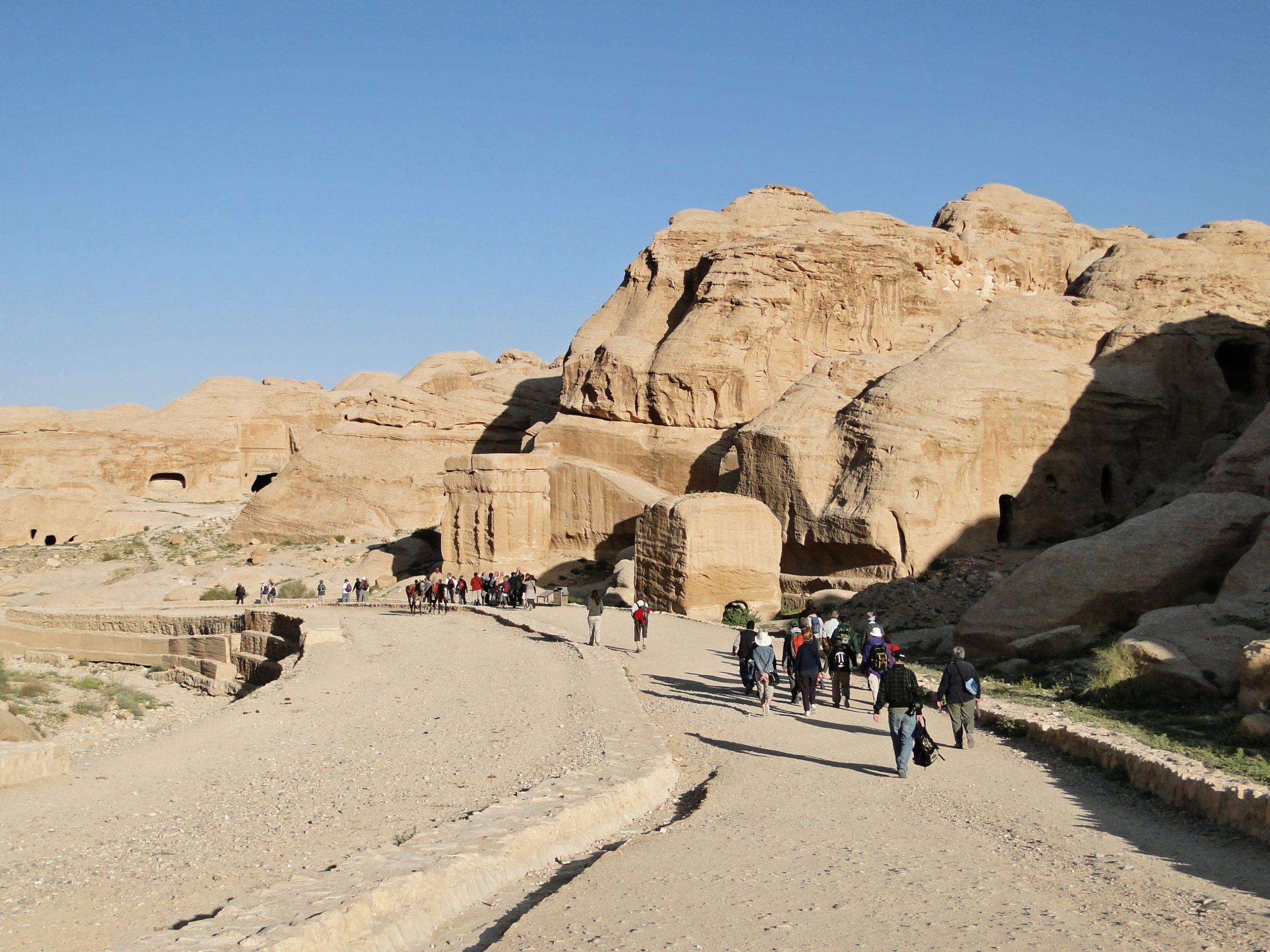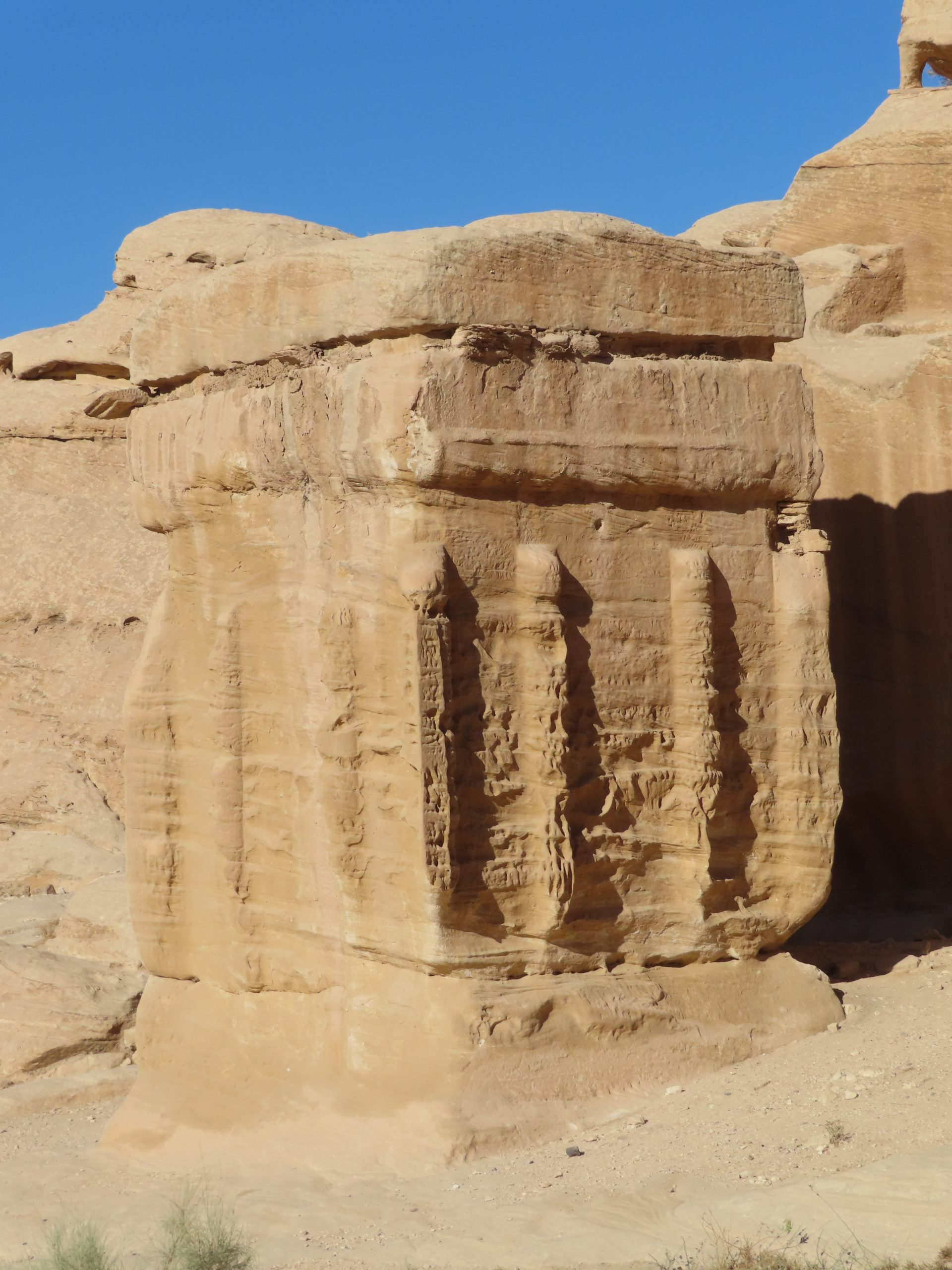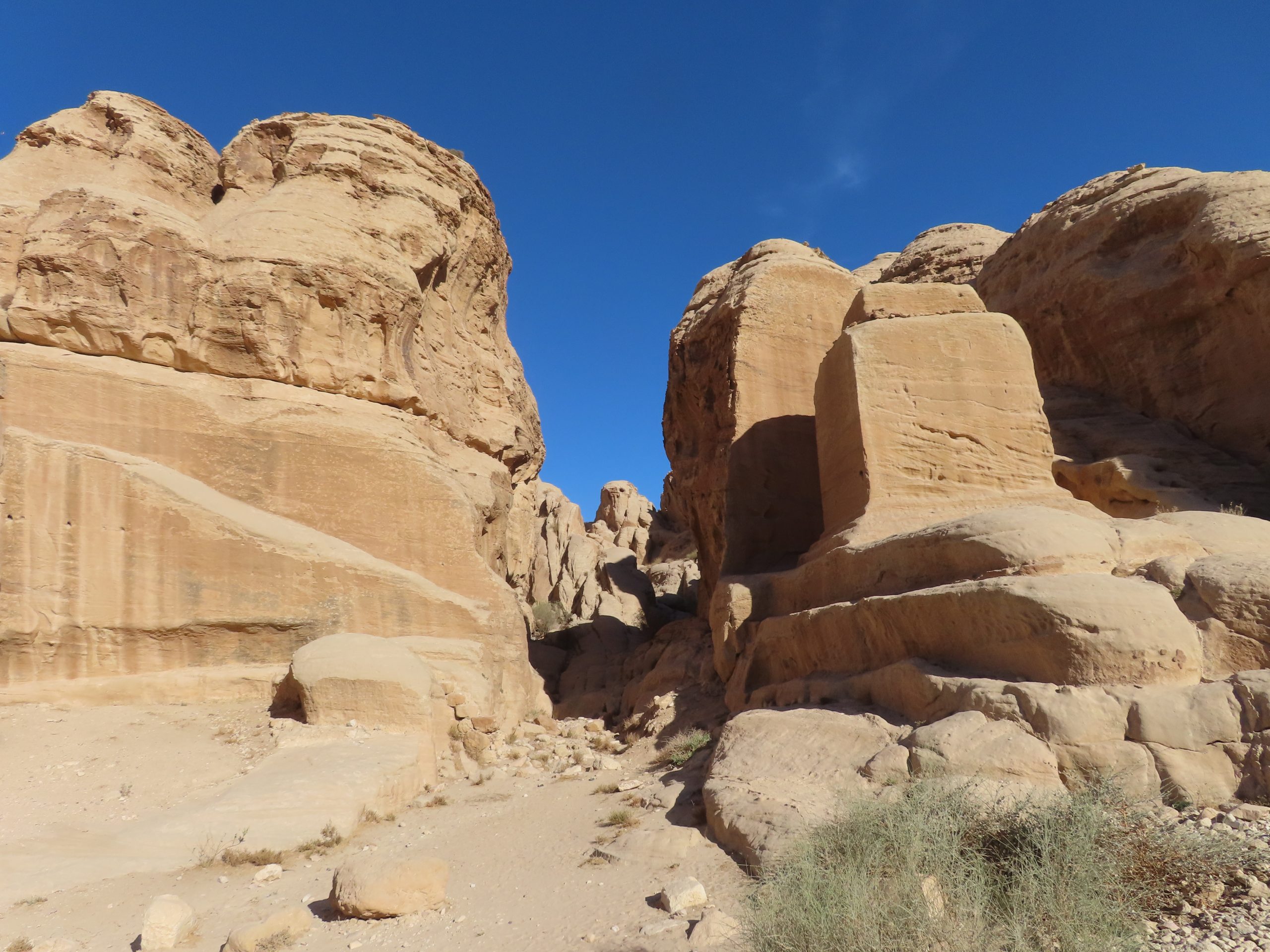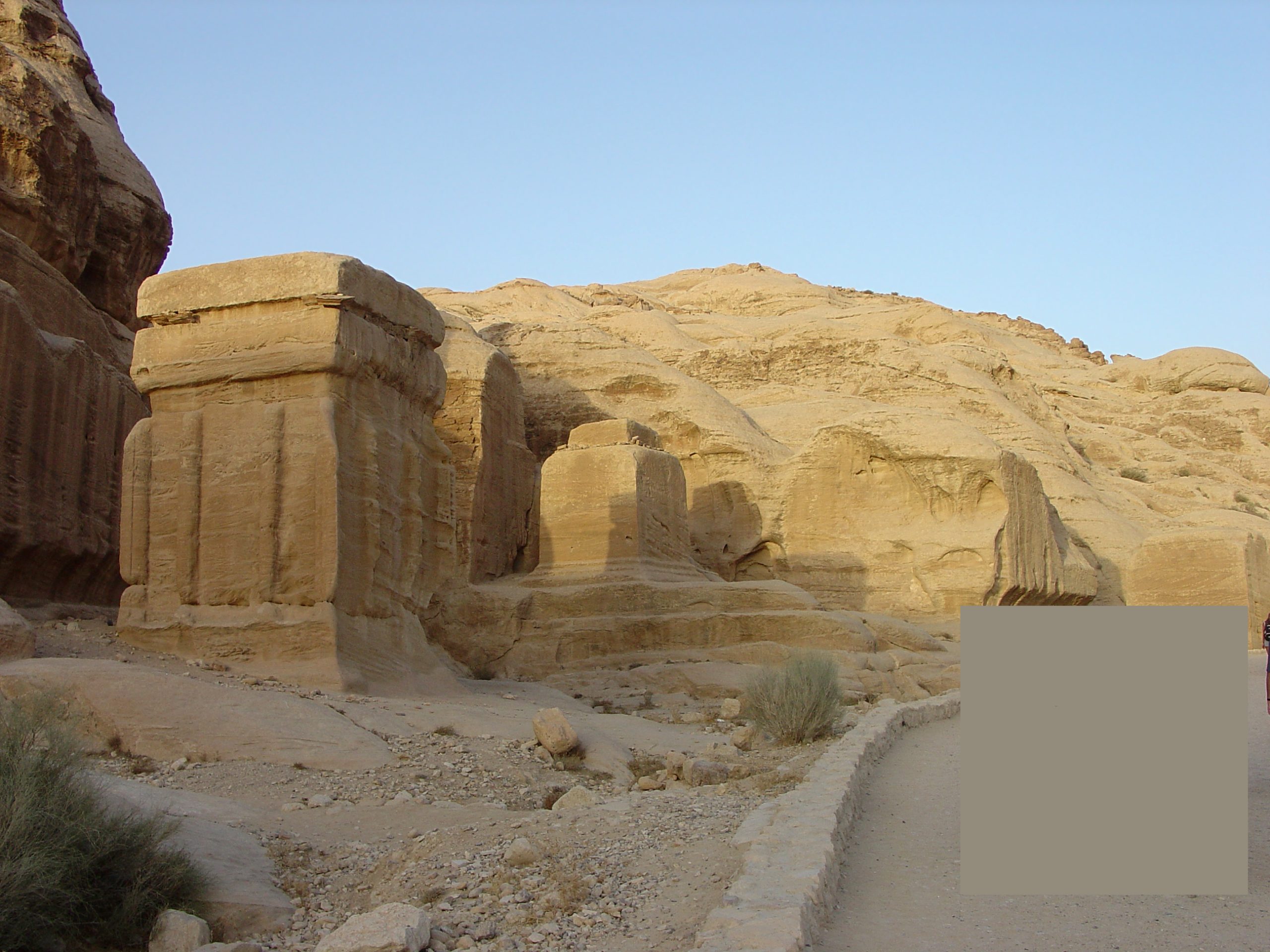The Djinn Blocks are a series of monumental tombs in the ancient city of Petra, Jordan. These cube-shaped structures, carved out of sandstone, stand as a testament to the architectural prowess of the Nabataeans. They date back to the 1st century AD and are among the first sights greeting visitors as they enter Petra through the Siq. The name “Djinn Blocks” is derived from the Arabic word ‘jinn’, referring to spiritual beings, due to the mysterious aura that surrounds them.
Get your dose of History via Email
Historical Background of Djinn Blocks Petra
The Djinn Blocks of Petra were discovered by Western explorers in the early 19th century. Swiss explorer Johann Ludwig Burckhardt unveiled Petra to the modern world in 1812. The Nabataeans, an Arab people, built these structures around the 1st century AD. They were part of a thriving trade kingdom, with Petra as its capital. Over time, the city was inhabited by various groups, including the Romans and Byzantines. While not the scene of major historical events, the Djinn Blocks remain a significant cultural landmark within Petra.
Archaeologists believe the Djinn Blocks served as tombs or commemorative monuments. The Nabataeans had a complex funerary tradition, and these structures are a part of that legacy. They are less elaborate than the famous Treasury or Monastery but are equally important for understanding Nabataean culture. The Djinn Blocks have stood the test of time, surviving earthquakes and the elements, a testament to the builders’ skill.

There is no specific record of who exactly built the Djinn Blocks. However, they are attributed to the Nabataeans, who were known for their rock-cut architecture. The Nabataeans left no written records about the construction of these structures, leaving much to the interpretation of modern scholars. The Djinn Blocks are among the earliest constructions in Petra, predating some of the more intricate facades found deeper within the city.
After the decline of the Nabataean kingdom, Petra fell into obscurity and was largely abandoned. The Djinn Blocks, along with the rest of the city, were forgotten by the outside world until their rediscovery. They have not been the center of significant historical events in recent times but have become a major tourist attraction and a symbol of Jordan’s rich history.
The Djinn Blocks have not been inhabited since ancient times. They were built as tombs and have remained as such throughout history. Their isolated location and solemn appearance have kept them relatively undisturbed by later inhabitants. Today, they stand as silent witnesses to the grandeur of Petra’s past, visited by thousands of tourists from around the globe.
About Djinn Blocks Petra
The Djinn Blocks are a collection of three large, square monuments. They are among the first structures visitors encounter in Petra. Carved directly from the sandstone cliffs, they showcase the Nabataeans’ mastery of rock-cut architecture. Each block features a flat facade with minimal decoration, a stark contrast to the elaborate carvings found elsewhere in Petra.

These structures are monumental in scale, with each block standing several meters tall. The simplicity of their design suggests they may predate the more ornate tombs of Petra. The Djinn Blocks are hewn from the same red-rose sandstone that characterizes the city, blending seamlessly with the surrounding landscape.
The construction technique of the Djinn Blocks involved carving the rock from the top down. This method was common among the Nabataeans and allowed for precise control over the final shape. The blocks’ facades have a recessed area that might have held inscriptions or decorations, now eroded by time.
Architecturally, the Djinn Blocks are less complex than other Petra structures. They lack the columns, pediments, and intricate iconography that adorn the city’s famous tombs and temples. However, their imposing size and prominent location suggest they held significant importance in Nabataean society.

The Djinn Blocks have withstood centuries of natural weathering. Their preservation allows modern visitors to appreciate the scale and significance of these ancient structures. They serve as a gateway to the wonders of Petra, setting the tone for the architectural marvels that lie beyond.
Theories and Interpretations
Several theories exist about the purpose of the Djinn Blocks. Most scholars agree they were tombs, part of the Nabataeans’ elaborate funerary practices. Some suggest they may have also served as cenotaphs or memorials for the deceased. The true purpose remains a topic of debate among historians.
The minimalist design of the Djinn Blocks has led to various interpretations. Their simplicity could indicate an early phase in Nabataean tomb architecture. Alternatively, it might reflect the status of those buried within, perhaps not as wealthy or powerful as those in more elaborate tombs.
Mysteries surround the Djinn Blocks, particularly due to the lack of inscriptions. This absence makes it difficult to link them to specific individuals or events in Nabataean history. The blocks’ name itself, referring to spirits, adds to their enigmatic nature.

Historical records from neighboring civilizations have been matched to Petra, but none specifically mention the Djinn Blocks. This lack of direct references has left much of their history to be pieced together from archaeological evidence. Dating of the structures has been carried out, primarily through comparative analysis with other known Nabataean sites.
The dating methods for the Djinn Blocks include stylistic comparisons and stratigraphy. These techniques help place the blocks within the broader timeline of Petra’s development. However, precise dating remains challenging due to the blocks’ simplicity and the weathering of potential dating clues.
At a glance
Country: Jordan
Civilization: Nabataeans
Age: 1st century AD

